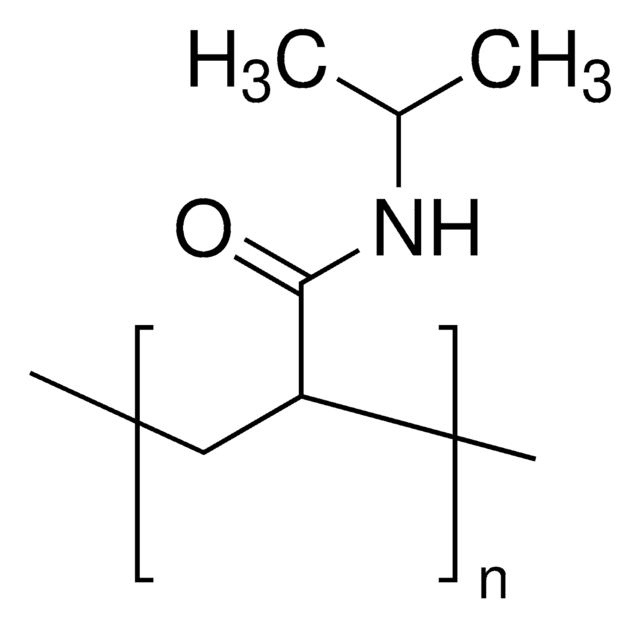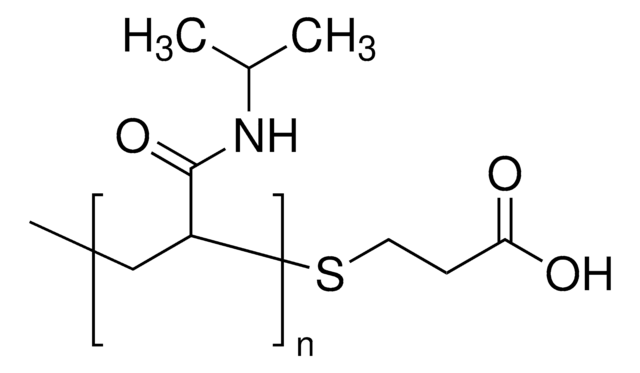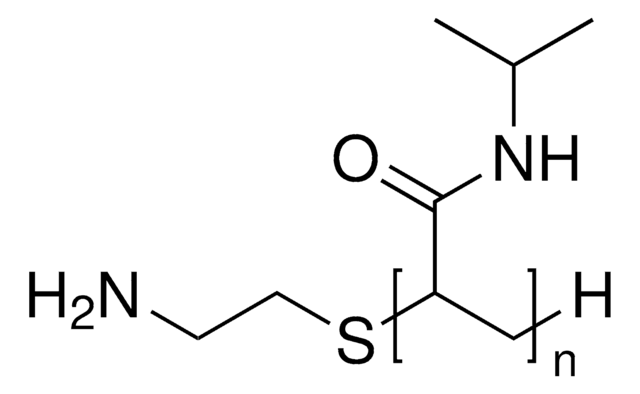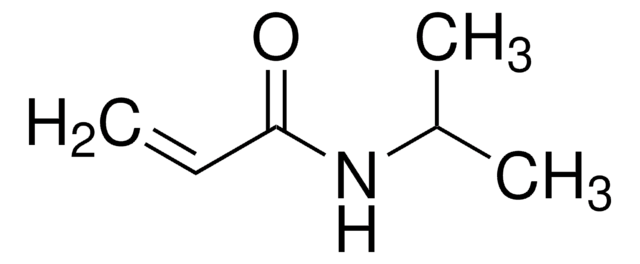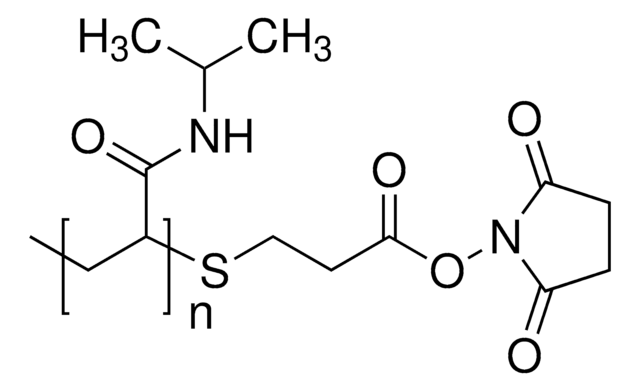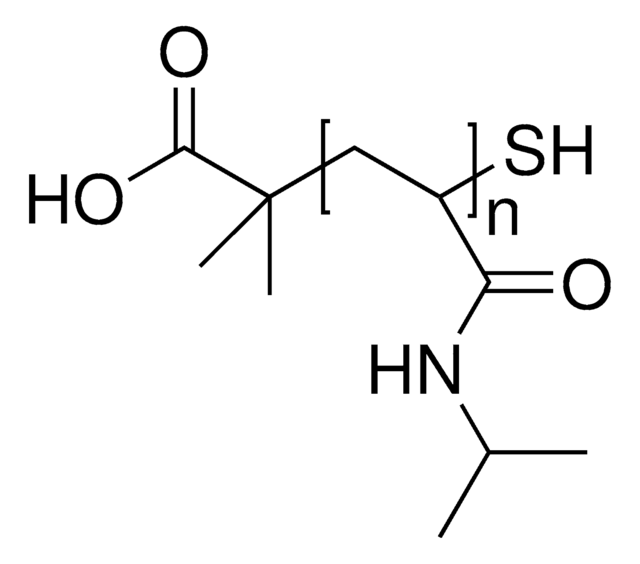Kluczowe dokumenty
724459
Poly(N-isopropylacrylamide), carboxylic acid terminated
average Mn 10,000
Synonim(y):
NIPAM polymer, PNIPAM-COOH, Polyacrylamide, functionalized polyNIPAM, functionalized polyacrylamide, polyNIPAM
About This Item
Polecane produkty
Postać
powder
Poziom jakości
masa cząsteczkowa
average Mn 10,000 by GPC (THF w/ 5%TEA, PS, RI)
average Mn 10,000
mp
>300 °C
Szukasz podobnych produktów? Odwiedź Przewodnik dotyczący porównywania produktów
Zastosowanie
Kod klasy składowania
11 - Combustible Solids
Klasa zagrożenia wodnego (WGK)
WGK 1
Temperatura zapłonu (°F)
Not applicable
Temperatura zapłonu (°C)
Not applicable
Wybierz jedną z najnowszych wersji:
Masz już ten produkt?
Dokumenty związane z niedawno zakupionymi produktami zostały zamieszczone w Bibliotece dokumentów.
Produkty
Poly(N-isopropylacrylamide), or PNIPAM, is a stimuli-responsive polymer that responds to changes in pH and temperature and has a LCST around 32 C.
Inżynieria tkankowa stała się kluczowym narzędziem terapeutycznym w leczeniu uszkodzonych lub chorych narządów i tkanek, takich jak naczynia krwionośne i pęcherze moczowe.
Tissue engineering has become a key therapeutic tool in the treatment of damaged or diseased organs and tissues, such as blood vessels and urinary bladders.
By altering the physicochemical properties, smart or intelligent drug delivery systems can be designed to deliver therapeutic molecules on-demand. Learn more about the application of stimuli-responsive materials in drug delivery.
Nasz zespół naukowców ma doświadczenie we wszystkich obszarach badań, w tym w naukach przyrodniczych, materiałoznawstwie, syntezie chemicznej, chromatografii, analityce i wielu innych dziedzinach.
Skontaktuj się z zespołem ds. pomocy technicznej